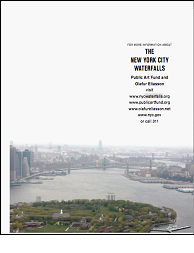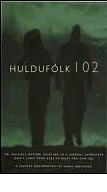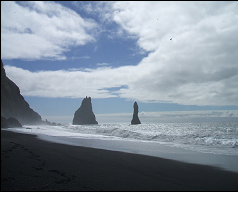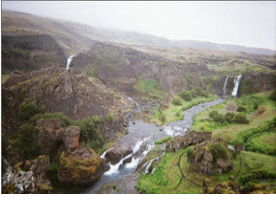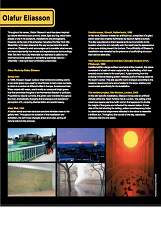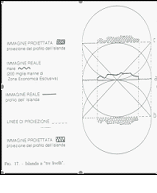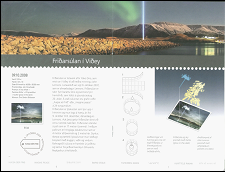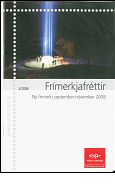Discussing someone’s identity can become a delicate matter because it touches upon the others’ self-perception. I suggest that sensitivity directed to forming and perceiving identity helps us approach this delicate situation. It is a matter of dedicating attention to the appearance of oneself and others and of developing our sensitivity towards nuances in a person’s appearance. I assume such sensitivity can prevent unproductive discussions caused by being too prejudiced and judgemental.
While this is hardly a surprising suggestion, it is more controversial to say that sensitivity relates to the forming of both identity and perception. I call this sensitivity aesthetics. To illustrate my focus, we read in the Baroque writer Baltasar Gracián’s reflections, Oráculo manual y arte de prudencia (The Oracle. A Manual of the Art of Discretion) from 1647: “Things do not pass for what they are but for what they seem. To be worthy and to know how to show your worth is to be doubly wise: what is not seen is as though it did not exist. Even reason itself is not revered when it lacks the semblance of reason” (Gracián 1953, § 130). “Most things in life depend upon right choice: it implies good taste and the most accurate judgment, for study and intelligence are not enough” (Gracián 1953, § 51).
This may sound like an argument in favour of how one should judge the book by its cover, contrary to the saying. My point is indeed that one should not underestimate the cover but improve the sensitivity to it. Ideas of identity may cause conflicts and disputes because we are too occupied with the idea of identity and consequently ignore how the identity is present in what appears which, and this is the point, is more complex and sometimes different from what we have an idea of.
1. Introduction
Fundamental to Western philosophy is the discrepancy between idea and appearances having also consequences for our view on identity. We are formed in relation to the environment – cultural, social and natural – we grow up in. What this means can be illustrated with what Pier Paolo Pasolini writes: “The education given to a boy by the objects, the things, the physical reality – in other words by the material phenomena of his social conditions – makes this boy bodily to whom he is and will be for the rest of his life” (Pasolini 10 April 1975, my translation). The bodily formation mentioned here is not merely an isolated component in forming one’s identity. We embody social relations as well as perception and sensorial relations to ourselves and the environment the way we have learned to. Because we cannot pay attention to everything influencing this learning, two opposing reactions appear. One is to reduce complexity and its ambiguities; another is to tolerate it. I will address this in Section 4. The answer to this opposition is not a choice of side but one of awareness of how identity is a reduction of complexity in which we should avoid losing our sense for what appears and is present as complex.
The two intervening sections seek to characterise this conflict by investigating the complexity of identity and a sensitive approach to our sensorial and bodily presence. I do not intend to engage in discussions on ideas and ideals of identity, their importance, legitimacy, origin or similar matters. This is not out of a rejection of the importance of such ideals, but because my intention is to draw attention to how appearance matters more than just as a cover to look behind. In Section 2 this is discussed in relation to some difficulties in talking about person and identity, while in Section 3 the discussion is of aesthetics as a matter of sensorial perception that supplements the reduction of complexity in a conceptual identification. Finally, in Section 4 I turn to some current discussions where the sensitive dimension is emphasised, namely with the concept of atmosphere according to Gernot Böhme and a ‘pathic aesthetics’ according to Tonino Griffero. Introducing these perspectives is not simply to avoid the uncomfortable situation of touching upon delicate issues in discussing identity. Rather, it is to draw attention to how consequences of strong ideas of identity prove not only to be insensitive and prejudiced but can result in neglect and dehumanisation of individuals.
2. Difficulties with person and identity
A very short answer to a question about one’s identity is given by showing officially authorised papers of identity, like a passport. However, it is usually not our passport we have in mind when we think of our identity and showing papers of identity is a formal situation meant to be void of sensitive matters. Nevertheless, it should be mentioned because we cannot underestimate how much is in fact said with this ultra-short life story (Ultrakurzgeschichte, Lübbe 1977, 147) of identity papers. Likewise, we must acknowledge the importance of the legal protection implied by being identified as belonging to a national, i.e. juridical, community. However, inquiries about identity are not always from officials, but can also be from a friend asking what the national is and what it means for my identity. These are the questions I pursue here.
The difficulty with the question of identity may prove to have a parallel to the two questions St. Augustine asks in the tenth book of his Confessions. One is ‘who are you?’, which he can answer with ‘a man’ – parallel to us showing our identity papers. But the other question, ‘what are you?’, is more than he can answer. What man is, the Creator knows, but not the creation. To get an answer from the Creator is as difficult as answering questions about the community we are identified as belonging to. For instance, I can look in my passport to learn that I am Danish, but this does not give an indication of what it is to be Danish. Public debates demonstrate that the question provokes strong opinions and feelings, along with political implications. Perhaps the delicacy of discussing identity lies here: identity is a political topic as well as one of how individuals perceive themselves. Perhaps it is the perception that is politically informed and for that reason some become hypersensitive or insensitive to some approaches.
The parallel to Augustine emphasises a difference, perhaps a conflict, between the complexity of my life-long education and my idea of who I am. We find discussions of this conflict in more forms such as Martin Heidegger’s concept of facticity (e.g. Groβheim 2012) and Arnold Gehlen’s characterisation of man as a non-determined animal subject to overtaxing (Gehlen 2004, 16, 36). I take this conflict between our complex education and our idea of who we are as motivation for suggesting an improved sensitivity. Not instead of, but as supplement to our understanding of ours and others’ identity.
The complexity of the cultural background, the experiences, educational ‘institutions’, i.e. schools, work-life, family and other institutionalised ideals, exceeds what one can possibly be fully aware of. Moreover, the history that has formed someone we talk to has – as long as we can talk – not ended both in terms of the person being alive and the continuing interpretation of one’s life-story (Lübbe 1977, 169). In response, we can develop a sensitivity for the appearances of the education and background embodied in someone’s physical presence. However, developing sensitivity becomes problematic when one’s perception is a misperception. It can lead to the point of becoming a delusion if we are too occupied with our idea of identity at the cost of a sense of how the identity appears to us.
To give an example: I may perceive myself as an open-minded and critical intellectual with a global outlook, while others may say I am a typical representative of cultural chauvinistic, Western oppressors. Perhaps others misjudge me. It is then a question whether the misjudgement matters to me or not. Maybe I am indifferent to it. Maybe I become indignant because I find the misjudging insensitive and ignorant to my appearance. Perhaps, it is a minor incident when it concerns my academic self-perception but different when it is about national, religious, and sexual identities. Perhaps it is no misjudgement. Instead it is me that is mistaken in my self-perception because I ignore how I embody physically, linguistically, and ideologically, a culture that has formed me. I may convince myself about my self-perception, but not others, because my appearance shows them something different. I may be so deluded by my self-perception that I am unable to see that my open-mindedness is in fact very limited.
This example touches upon a line of difficulties related to how we wish to appear, are asked to appear, and are judged in appearance – examples dealt with in, for example, Erwing Goffman’s studies of playing and displaying social roles (Goffman 1956). Appearance is the keyword. While the question of self-perception is one of interpretation and understanding, there is also a question of how this self-perception is performed and made apparent to others and even myself. The roles we play, i.e. the person we appear as, are many-faceted. They are necessary for social interaction but also sometimes problematic for upholding social ideals and ideologies. They can prove to conceal inherent conflicts between one’s role-playing and the self-delusion of engaging in becoming the role while being aware that it is merely a role. We find this addressed by Jean-Paul Sartre as bad faith [mauvaise foi] (Sartre, 1984, 86 ff., 349). Bad faith illustrates the difficulty in being aware of our presence, hence the limits to our sensitivity.
Here, awareness of the sensorial aspects of the formation of an individual, of the individual’s self-perception and perceptual skills in general, come in. It is an awareness of elements in the forming of an individual’s identity related to the influence of the environment such as dress-codes as they are used in work-life or public appearance and at special occasions. It is attention paid to the cultural and sub-cultural environments one moves in; it is our performing of body-language, gestures and facial expressions we see in people we live among and we imitate. Such examples are about how the environment matters because we are guided and influenced by cultural artefacts like Pasolini’s boy above. We discuss such different cultural artefacts when critically reviewing their qualities important for taste and aesthetic judgements. I suggest, we understand taste and aesthetic judgement as attention to the forming of our senses and body, i.e. to the forming of our appearance and perceptual skills, rather than a critical evaluation of certain qualities. Before turning to aesthetics, I will take the examples above one step further to emphasise why the discussions about identity can become so sensitive and difficult.
When identity relates to self-perception, it concerns how we wish to perceive ourselves and how the forming of us through upbringing has been a determining factor for how we are formed and what we are able to perceive – Pasolini’s boy did not chose the things around him. This can cause conflicts. A Western teenage life can demonstrate it in cases when the formation of an identity becomes a struggle between imitating desired ideals and the realisation of how one has already been formed by family and the surrounding culture. From others’ judgements one learns the efforts are not always in accordance with how one desires to be seen.
The gap revealed between what one believes and what others see, which can reveal one’s illusions or prejudices, is the gap that makes the matter delicate. It is one thing to be wrong in my opinions about different things, but it is something different to be wrong about myself when confronted with other’s insistence on perceiving me differently from what I believe about myself. We may take this insistence as insensitive or disrespectful. The discovery of how we have perceived ourselves differently from others’ perception of us may lead to existential questions like those played out in Luigi Pirandello’s novel Uno, nessuno e centomila (One, No One, and One Hundred Thousand) from 1926. For the protagonist this also becomes a question of his own identity – what he comes to know about himself makes it impossible to go back to his old identity.
The questions about my identity require a small digression to prevent misunderstandings. I am not discussing personal identity related to what constitutes the identity of a subject. Many will recognize what initiates these discussions as childhood puzzles like how I know I am the same after I wake up from sleep when I was not aware of myself in the meantime. Or what identity shift is there between me as child learning to read and me today writing about identity? If my mind constitutes the identity, what if there are discontinuities like experiencing dramatic events that affect and change memory and personality, like Pirandello’s protagonist does? What about diseases like Alzheimer? And what identity is there when the physical components of my body have been exchanged over time?
Such questions belong to a different focus. They are largely about how I can know that I am me over time and events – the implication expressed by Derek Parfit in an iconic text for these discussions: “Whatever happens between now and any future time, either I shall still exist, or I shall not” (Parfit 1971, 3). I ask instead, how I can know that you are you?
Returning to the passport, it is used to identify a person and I now deliberately use person – this digression is also about personal identity. My official document identifies what establishes the legal protection of my person. Person is a legal notion identifying a legal unit which can also be a corporation or a state. The person is not just the individual being in front of me, but an individual identified as a person. Herein lie difficulties.
We can consider a person to be someone formed by particular experiences and history, someone with a character who uses ‘I’ (German ich) as a pronoun, which is different from using ‘an I’ (German Ich) as a noun where we can say it is a singular of a kind. Despite difficulties about the concept of a person, it suffices here to rely on this difference taken from Manfred Frank and a classical German tradition. The difference between a character and a singular (Frank 1986, 25 and 64 f.). Furthermore, a person is present in an individual body. We can say, like Peter Strawson, that a person is of “a type of entity such that both predicates ascribing states of consciousness and predicates ascribing corporeal characteristics, a physical situation &c. are equally applicable to a single individual of that single type” (Strawson 1990, 102, emphasis in original; Frank discusses Strawson in Frank 1986, 99 ff.).
One particular difficulty is about the composition of this person present to us; a composition used in characterisations of man in Western philosophy. It is the composition of animal and rationality repeated often with the Latin animal rationale. The difficulty of this characterisation proves to have political implications when the animality is excluded from what man really is (Esposito 2012). Western thinking can be characterised by what Roberto Esposito calls a ‘dispositif of the person’: “a role productive of real effects […] based on the assumed, continuously recurring separation between person as an artificial entity and the human as a natural being, whom the status of person may or may not befit […] the terrifying constitutive power of this dispositif lies […] in the zones of indistinguishability it creates at their boundaries” (Esposito 2012, 9). The problem of what animal and rationality are, about the components of our understanding of a human person, and how we have come to have these concepts is a different study from my focus (see Agamben 2002 and Esposito 2012). However, it will form an implication that reappears as a question that Simone Weil radicalises below.
Returning to social roles and person makes also the parallel to Augustine and his ‘who are you’- question reappear. We can answer it by referring to the legal status and self-perceived identity – like Augustine I can answer ‘a man’. But confronted with the question of who I am as a person it becomes complex. It becomes the role or character that I want to be known for. But which role? We may play more roles and are not interested in sharing any role with anyone – having a drink with colleagues after work may become a different situation if the boss or one’s students show up and we prefer to keep up a façade of work life. Sometimes others may insist on knowing the ‘true’ character of a person, but we may be pending between roles, between the face we show at the front answering what is required, for instance, in professional life and then the face when we are backstage (see Goffman 1956, front 13 ff., backstage 69 ff.). Showing one’s true face may be thought to be what is revealed when the façade goes down, when we are ‘off’, but it may in fact turn out to be yet another face. The ‘true’ face may even prove to be one of self-delusion like experienced by the protagonist of Pirandello’s novel. In his case it is the physical features of his face that others have perceived different from himself, but it could also be about cultural, national, ethnic, sexual or similar identities with their roles and faces.
It is these concrete and complex appearances I suggest meeting with sensitivity. Identity cannot be related only to our ideals of the person we see and we wish to be seen as. If we determine identity only in relation to the person and not bodily and physical appearances, we run into a difficulty. Weil draws attention to the difference between saying ‘your person does not interest me’ which is critical and impolite and ‘you do not interest me’ which is offending and cruel (Weil 2005, 70). It is not the person but the concrete individual that is inviolable and sacred to me in a man passing by. “If it were the human personality in him that was sacred to me, I could easily put out his eyes. As a blind man he would be exactly as much a human personality as before. I should not have touched the person in him at all. I should have destroyed nothing but his eyes” (Weil 2005, 71).
Weil’s critique is of the personalism of Jacques Maritain (Springsted 2009). He represents a Thomist tradition which also reflects large parts of Western philosophy. The understanding of human being is that it is a whole composed of what is spiritual and material. The spiritual is considered the true person and the material the individuality which is only “the shadow of personality” (Maritain 1946, 429). Her point has consequences beyond personalism. The reduction of the material and individual to a mere shadow ignores the importance of the concrete other in who’s eyes we look. We may for many reasons want to distinguish between spirit and body, but the spirit must appear in facial expressions and bodily acts. In discussions about identity we should not dismiss the sensorial and bodily presence of someone because more is revealed about identity in this presence than in the idea of a person. The concrete presence asks for sensitivity, and sensitivity is now to establish as a matter of aesthetics before suggesting which forms of aesthetics may offer the best answers.
3. Aesthetic approach to identity
Suggesting aesthetics requires more of an explanation than relating it to sensitivity. At least to explain why sensitivity and how sensitivity? When we read Gracián about how right choice implies good taste and accurate judgment, we are at the core of what a century later becomes the discipline of aesthetics, namely at a rhetoric-humanistic tradition coming from the Renaissance (see e.g. Franke 1972 and Talon-Hugon 2017). In the age of Enlightenment, this tradition is confronted with a different understanding of rationality where empirical knowledge and methods coming from mathematics are claimed to be the foundation for secure knowledge. While this approach proves successful in the study of nature, it is problematic in relation to moral living. This difficulty is an issue brought up, for instance by Giambattista Vico who warns about it in his opening lecture for the new academic year at the University of Napoli in 1708, De nostri temporis studiorum (On the Study Method of Our Times).
When we discuss knowledge, we should always include a question of what kind of knowledge. What is it we want to know? Knowing how to construct a bridge is different from knowing how to educate a child. While this is obvious, it is obviously not always respected. Successful strategies of giving answers, like the new methods of sciences, tempt us to apply the methods also where they should not be used.
We find here a parallel to the difference between identity on paper and the concrete appearance of the other. Since the 18th century, increases in migration from the countryside to the cities in Western Europe has created difficulties in identification (Sennett 1992, 45 ff.). While medieval people would travel – craftspeople were usually required to travel to educate before being allowed a position at home – they would be identified by, for example, their profession and place of origin. With migration to the cities, other means of identification are required for identifying others, not least as others often will be strangers (Sennett 1992, 65 ff.). When old forms collapse, like dress codes, and become subject to free play the rules of identification change. “Whether people were in fact what they wore was less important than their desire to wear something recognizable in order to be someone on the street” (Sennett 1992, 67). Being someone is not to come from this town or working in that profession; it becomes appearing as the person one wants to appear as.
However, some, for instance criminals, would try and benefit from such role playing and from the anonymity of the cities making a method for identification necessary. Interestingly enough, a method in the spirit of new sciences and techniques appears in late 19th century: fingerprints. It provides an answer to the practical problem of identifying an individual when there is no one around to identify. Everyone has a body and instead of identifying someone by other peoples’ testimony we can identify the body with a print in ink or later a code of nucleotides. It serves to identify someone, but it is something no one identifies themselves with. Identity comes here without a person (Agamben 2011, 48 ff.). At best, we get an answer to who someone is by identifying that someone as an individual but not an answer to the question of who that person then is. While we are the one with the fingerprints, we are not our fingerprints.
The fingerprint solves one problem of identity in a context of mobility and urban anonymity; however, it does not answer our questions of a person’s character for which sensitivity towards the appearance of the concrete, bodily presence of the person is required. The body is not seen as the essential and defining component of being human, at the same time we cannot think a human without. Western philosophical tradition has struggled with relating the bodily and the spiritual that form the two components of man as animal rationale. Nevertheless, we experience meeting points between them. For instance, when we are among other people and the body reacts contrary to our will, like in blushing. In this case, the body reveals something about our identity that conflicts with how one believes or desires it to be. We are, perhaps, not more in charge of forming our person than the body allows us when it reacts despite intentions and reveals how the social environment has taken control and is embodied. Something seems to act independently of the identity of the person we relate to the mind. This something and this bodily reaction relates to the complexity of our background, to our facticity or overtaxed non-determination. It is a meeting point where aesthetics appears.
The act of blushing is a bodily reaction to the norms of the social environment that we have learned to perform. The norms have been embodied throughout our education. This education appears in the performance of a character in taste, in what we can call aesthetic education when we understand this education as a training of sensitivity as such and not of making judgements about specific aesthetic artefacts (see Moreau 2019 and my Friberg 2017). We learn what is considered an appropriate behaviour through exercising instructions coming from other people and from the organisation of the physical and social environment. “Tastes are imparted by personal intercourse and are passed on by frequenting the society of one’s fellows” (Gracián 1953, §65). The rhetorical-humanistic tradition that forms aesthetics is about forming social skills leading to ‘good taste and accurate judgment’ through which one shows one’s worth. A century after Graciàn, Lord Chesterfield instructs his son in becoming a man of good sense by paying attention to how people appear as “[t]he world is taken by the outside of things” (Lord Chesterfield 2008, 185 (26 November 1749)). The first impression one makes is crucial; it may vary but “it will never totally change” (Lord Chesterfield 2008, 108 (29 October 1748)). Appearance is everything and one must learn that “manner, in everything, is at least as important as the matter; and that the latter never can please, without a good degree of elegancy in the former” (Lord Chesterfield 2008, 331 (16 April 1759), emphasis in original).
Lord Chesterfield would undoubtedly hope for his son to blush of embarrassment if he should act with bad manners in front of his father at a social event, hence revealing bodily that he knows better than he acts. Critical voices will call it a mere superficial play of social roles and point out how problematic it is to reproduce and maintain specific social roles – we can think of Lord Chesterfield’s contemporary Rousseau. This critique may be justified but introducing aesthetics in this context is not for the judgement of good and bad taste, or of superficial and authentic identities; it is for the importance of this sensorial and bodily aspect of our social interaction and formation for identity. Whatever identity or crisis of identity anyone experiences, the point is that identity is embodied in us and appears in any social presence we make.
The relation between aesthetics and identity should be apparent when recognising the relation to the forming of senses, feelings, and body. Aesthetics was and is related to education and formation to become the person one is within a community, to acquire an identity within this context. Discourses on identity in our age relate often to being an independent person as a member of a community while also being true to oneself. Independence can take many forms. It may be to resist or oppose ideals of identity imposed on one like ideas of cultural origin and heritage, social status and roles, and ideas of gender. But in general, one can probably agree when Theodor Adorno says that “education is impotent and ideological when it ignores the intention of adaption and does not prepare people for making them deal with the world” (Adorno 1971, 109, my translation). A crucial question is to the dialectic of following while not following others blindly without a critical sense. We cannot simply trust someone with good manners and taste also to be a good person. The other can be what Kant, in Kritik der Urteilskraft (Critique of Judgement), calls a virtuoso of taste (§ 42). Classical education and fine cultural environments do not make a good character alone as Adorno warns us; it makes mere followers (Adorno 1971, 93).
Here is a reason for combining identity with aesthetics – for combining ideals with a sense for the complexity of what appears. The idea of identity one forms is never a mere instruction for acting (Lübbe 1977, 225). Acting is about judgement and judgement is to have a sense of what to do, when to do it, and how to do it. It is about becoming ‘a man of sense’, about tact and flair, about Fingerspitzengefühl which is not about fingerprints, but about sensitivity required for performing social roles. While the examples above have largely been related to the age of introducing aesthetics to maintain the educational ideals of a rhetoric-humanistic tradition challenged by Enlightenment critique of these ideals as superficial and insincere as well as obscure and oppressive, we should insist that any age has its set of roles to play. Here it must suffice to compare Richard Sennett’s description of 18th and 19th century with Erwing Goffman’s of the 20th (Sennett 1992; Goffman 1956). One can criticise any set of roles as insincere, but one cannot pretend there are social relations without any. The question of identity of the fingerprint may answer requests of a role-free relation, but it is, as said, an identity one does not identify with. A reduction of roles to only an ideal of a person is what brings back Weil’s exhortation that we must recognise the concrete person present who is looking at us. In our need of identifying the other we must avoid the danger of misjudging by judging only from what we know; it makes our judgements become prejudices. Aesthetics with sensitivity and presence as the focus is an offer of steering around this danger.
4. Neo-baroque and atmosphere as aesthetic strategies
In the introduction I suggested two reactions to the complexity of our environment, one of reducing complexity and another of tolerating it. This is taken from an essay of Thomas Bauer where ambiguities are the focal point (Bauer 2018, 13 ff.). In some periods and cultural forms, he finds tolerance of ambiguities becoming more prevalent, an example is the Baroque age. In other periods reduction dominates, like the age of ideologies of the 19th and 20th centuries (Bauer 2018, 21). He finds our age to be characterised by reduction (Bauer 2018, 30). With reduction comes intolerance due to an obsession with truth, rejection of conventions, and an ideal of purity (Bauer 2018, 44). We can relate this to an idea of identity that reduces the complexity and ambiguity of, Augustine again, what we are by holding on to a simple answer to who we are. Identity can be reduced to an ideal related to specific narratives becoming pivotal for self-perception as well as the perception of others. The ultrashort life-story of nationality and gender derived from the passport can become the decisive story.
A reduction of ambiguity parallels the discrepancy between the plurality of appearances and their reduction to ideas by which we can identify what is essential in the multiplicity of sensuous appearances, i.e. to the model of knowledge. This model prioritises the reductive strategy of rational discourses over sensuous perceptions. Baumgarten introduces aesthetics to add to the intensity in conceptual clarification a parallel in the extensity of sensorial perception (see Franke 1972, 107 f. and 113 f.). Aesthetics is about a sensorial abundance that compensates the reduction of intellectual views. When looking for the acknowledgement of sensitivity today, we find that the rhetorical-humanistic tradition and Baroque culture reappear in what has been called Neo-baroque.
Both Mario Perniola and Gernot Böhme associate some contemporary cultural forms to the Baroque. The use of Neo-baroque should not be confused with stylistic forms of especially late 19th century; it is a philosophical idea concerned with an attention given to senses and sensitivity that one could ascribe to Baroque culture. It is an attention rejected by the Enlightenment with its idea of throwing light over obscure formations in culture. Following Perniola’s reading of Gilles Deleuze’s Le pli – Leibniz et le Baroque (The Fold. Leibniz and the Baroque) from 1988 (Perniola 1995, 5 ff.), we find here a characteristic that also resembles a critique raised by Romanticism. That the idea of knowledge as throwing light over the world faces the problem that when light is cast on things, it also casts shadows. Using the fold as a metaphor, Baroque thinking, according to Deleuze and Perniola, keeps in mind that when we try and unfold something, it folds again; when something is brought forward, something else disappears into the shadow. We can also say that the Enlightenment is an ideal of a vertical thinking, where light from above will enlighten the world, in opposition to a horizontal way of thinking of a permanent interplay of folds where anything made apparent will leave something else obscure. This is what also parallels Bauer’s dialectics of reducing and tolerating ambiguities.
The Neo-baroque appears along with what is known as the Postmodern and a parallel between them is the postmodern rebellion against fixed forms and identities. A Danish publication from 1999 calls the young generation at the turn of the millennium the ‘sampled generation’ not least because of the play with identities explained in interviews: “Everyone wants to create a concept around one’s person. One works on an image of oneself, but there is usually no story behind what one wants to tell. You just know you must express the image” (Heuseler & Staun 1999, 18 my translation). With a striking resemblance to Sennett about 18th century above, ‘whether people were in fact what they wore’, the turn of millennium is an age of images where “the form is as important as the content” (Heuseler & Staun 1999, 86, my translation). While the decades before the turn of millennium display a free play with identities the decades following seem more often to be about recognition and defence of an identity related to cultural origin, gender, national communities and the like.
There is no reason not to believe both agendas always coexist or that reduction and tolerance are mutual but one often more dominant. Which one is dominant and when is an empirical question; philosophically the interest is in the corresponding forms of perception. Here, Perniola draws attention to a “thinking which is characterized precisely by a suspension of the subjective and the private, by an opening up of enigmatic areas and by an experience that by definition goes beyond the logic of identity” (Perniola 1995, 40). He uses Baroque figures of thinking to reverse the idea that thinking comes from within a subject, like in psychological and transcendental subjectivity. Instead, he emphasises being receptive to what comes from without: “The mind is suspended, silent, listening out for something coming from outside” (Perniola 1995, 98). He draws a parallel to Ignatius Loyola’s Spiritual Exercises from the mid-16th century. In an enigmatic and folded world, sensitivity is suggested as a better approach than insisting on one’s limited and flawed knowledge.
Böhme also draws a parallel to the Baroque when he introduces atmosphere as a fundamental concept of aesthetics (Böhme 1995, 14). In opposition to the domination of judgement and interpretation of art in discourses on aesthetics, he asks instead for an investigation of perception. He suggests aesthetics as a theory of perception, where “perception is understood as the experience [Erfahrung] of the presence of people, objects and environments” (Böhme 1995, 25, my translation). Perception is the way in which one is bodily [leiblich] related to something and how one is affectively present [sich befindet] in the environment (Böhme 1995, 47 f.). In a way that also sounds similar to the Baroque sense, Tonino Griffero suggests a ‘pathic aesthetics’, i.e. a sensitive reception of the environment in which “pathicity means valorizing the ability to let oneself go […] one could sum it up as the ability to be a means of what happens to us rather than subjects of what we do”; it is about being “as faithful as possible to the “presence”, to the way in which appearances resound in our felt body” (Griffero 2019, 415).
Atmosphere is a phenomenological investigation of perception that challenges the dominant understanding of perception as object-oriented and object-determining. Atmosphere precedes the fixation we seek when we reduce phenomena to something answering our ‘what-is-it’ question. In this sense, it is about tolerating the ambiguity and suspending judgements in what is also a change of focus from the perceiving of atmosphere, like when we characterise an atmosphere of a place, to perceive atmospherically. Such a perception is one that concerns “chaotic-multiple situations endowed with their own internal significance” (Griffero 2014, 32). Of course, we often wish to establish what something is by identifying it as something specific. We perceive an object as a ‘one of a kind’ which we express by saying ‘this is a vase’. However, we also relate to the same something in more ways. We point at the vase and ask the child: ‘what is it?’ and the child may answer: ‘it is blue!’. True, the vase is blue, but we teach the child that there is an order in how we describe it: ‘it is a vase and it is blue’. I know I have this blue vase on the table, but it may matter more to me that it is blue than knowing it is a vase. It is this order of thing and qualities, vase before blue, within perception that is questioned. Likewise, the idea of evaluating qualities called aesthetic are questioned. When these qualities are about the vase being made by a recognised designer and with qualities of proportions and material considered artistic, they form a discourse of taste with ideals of interpretation and validation of qualities. However, they limit aesthetics to an ideal instead of attention to what is present – now establishing a parallel to perceiving someone’s identity from an ideal of it and not the concrete person present.
When Böhme introduces atmosphere, he asks for a perception that integrates all the elements of sensing and being bodily affected. He comes to the concept of atmosphere through speaking of ecology, which should not be mistaken for a suggestion of nature as the guiding principle for aesthetics, but as a discipline of the integration of elements into an organic environment [Umwelt] (Böhme 1995, 13 ff.). While one comes across ideas of distance in many discourses on aesthetic judgement, emblematic with disinterestedness, the countermove with an ecological approach is the integration of elements which also includes the human being as a sensorial and bodily being affected by its surroundings. The approach here is no determination of objects or evaluation of their specific qualities but a matter of presence. As Griffero phrases it, “the phenomenological “that” reveals to be irreducible to the cognitive “what”” (Griffero 2014, 32).
Moving from ‘what’ to ‘that’ makes presence essential. Furthermore, it is about one’s presence in the world characterised as an affective felt-bodily attention towards what happens to us, to the states we are in (Griffero 2019, 418). The affecting of our senses and body, which is necessarily a part of perception, takes us from characterisations of atmospheres as something we can talk about in daily language to a more fundamental relation to the world. It is at this point we change the focus from perceiving atmosphere to perceiving atmospherically. In everyday conversations about atmosphere we may largely refer to them as something we experience. We can talk about an intimate atmosphere of a gathering or a hectic atmosphere in the street as if there is something there that appears with the people, the arrangements of objects, movements and talking. We may also, in everyday conversations, relate to atmosphere as a mood caused by what we encounter, as a psychological state. But using the example of the blue vase, atmosphere is not a feeling caused by the vase; causality will be a false category to use. Atmosphere is the blueness that occupies the space and puts me in a felt-bodily state when the reality of the perceived is perceived as a sphere of presence and the reality or the perceiver is bodily present in a specific way (Böhme 1995, 34). “An atmosphere is an influential presence inextricably linked to felt-bodily processes” (Griffero 2019, 419).
Presence is thus essential; our own presence as well as what is present to us. And coming back to identity, the presence is about the presence of the other person. We want to know who the other is and to answer this question we apply forms of reduction such as asking for documents and other social markers used for identifying. Obviously, there is no presence in the documents and likewise there is little presence when we try and look behind the façade, the mask, to the person who is behind – when we try to move beyond the presence as not to be fooled by the virtuoso of taste. However, this is where a balance should be kept. If we read the advices of Lord Chesterfield only as a concern for playing along with the different roles in social life, we neglect that they are for knowing how to present oneself and to understand what is in others’ presence. The point is to avoid a one-sided reading, seeking behind the person’s presence in the belief there is a true character to find and it is to acknowledge that we cannot do different, we are obliged to appearances: “[S]ince the reality that the individual is concerned with is unperceivable at the moment, appearances must be relied upon in its stead. And, paradoxically, the more the individual is concerned with the reality that is not available to perception, the more must he concentrate his attention on appearances” (Goffman 1956, 161).
Apart from doubting if we in fact know ourselves, whether we act in bad faith or not, and if we can know what we are beyond the insistence on what we want to be, we can question this vertical idea of knowledge where appearance is the appearance of something like an essence. Böhme asks if the idea of essence is feasible (Böhme 1995, 195), a question that can relate to the previous comments about the animal-rational distinction and the ‘dispositif of the person’. ‘Rational’ is not unproblematically established as the essence of what a human is. When established, it may prove to be a political act rather than a knowledge-driven definition. In response to Weil’s warning that the concrete individual we look into the eyes is in danger of annihilation when we see only the person, Böhme establishes that the other is a body, and this body is no mere appearance of the person. It is presence of the bodily other that we bodily react to (Böhme 1995, 197, 200). We have the descriptions Jean-Paul Sartre gives of the look, in mind; how we react to the other looking at us (Sartre 1984, 340 ff.). The blushing, mentioned as a meeting point between identity and body where aesthetics appears, is revealing because it is no performance given, but is what the blushing person is; “the bond between my unreflective consciousness and my Ego, which is being looked at, is a bond not of knowing but of being” (Sartre 1984, 350, emphasis in original).
While sensitivity does not prevent the delicacy of discourses on identity, it can prevent overly prejudiced and judgemental approaches. While a critical voice may suspect it becomes too much of a receptive approach disabling a critical stance, the point, as emphasised by Griffero, is that it “is a chance to see affective involvement as potentially leading to emancipation rather than to occult and alienating mediation, as our paranoid culture seems instead to be obliged to claim” (Griffero 2019, 416). Whether the chance is also a chance of success is then a further discussion to take.
5. A concluding reflection
The delicacy of discussing identity comes from holding views on identity one resists having challenged, and it is due to a neglect of the complexity of our sensorial and bodily constitution. When we reduce complexity and ambiguity to help us in orientation and understanding we also arrive at frames for interpretation that it is tempting to stick with. The small child is not unhappy about being told it is wrong; the world is still boundless and confusing and small steps in reductions of complexity welcome. Later in life, when we begin to have fixed points of orientation and ideas of interpretation, we are less prone to acknowledge that we are, sometimes, wrong. Especially when it is to be wrong about oneself.
This may sound like a matter of psychological constitutions, even as normative and biased when calling it tolerant and reductive. However, a different phrasing could also find the sensitivity suggested here as an incapacity regarding analysis and decision-making – an incapacity in growing up.
The intention is not to characterise psychological figures but to address how to deal with identity. However, any such addressing has motives and I have had two. One is that discourses on identity currently can become delicate to the point of heated. Identity today is often a political matter and while there is an inevitable political element in questions of identity, we should be aware of both what is politically motivated, hence a discourse on power and what the political implications are. The latter relates to the other motive that comes from the problem of Weil’s blinded man. It points beyond difficulties of heated debates and to questions that, in dramatic ways, ask for giving account of the understanding of individuals and persons we build our political thinking and legal system on.
In relation to this problem, I suggest the inclusion of aesthetics to enhance the sensitivity of understanding to prevent one-sided and prejudicial views on other people that as consequence may neglect the concrete other. Concerning the one-sided views, we cannot escape how elements beyond what we are aware of affect us in forming us throughout life. In that sense we are, in Gehlen’s characterisation, overtaxed and we should be careful not to reduce the concrete other to an ideal only, even if the ideal is of a moral and spiritual being.
I would like to thank Laura Reininger for help with the language.
References
Adorno, Theodor W. 1971. Erziehung zur Mündigkeit. Edited by G. Kadelbach. Frankfurt a.M., Suhrkamp.
Agamben, Giorgio. 2002. The Open. Man and Animal. Translated by K. Attell. Stanford University Press.
-, 2011. Nudities. Translated by D. Kishik. Stanford University Press.
Bauer, Thomas. 2018. Die Vereindeutigung der Welt. Über den Verlust an Merhdeutigkeit und Vielfalt. Stuttgart, Reclam.
Böhme, Gernot. 1995. Atmosphäre. Frankfurt a.M., Suhrkamp.
Esposito, Roberto. 2012. Third Person. Politics of life and philosophy of the impersonal. Translated by Z. Hanafi. Cambridge, Polity Press.
Frank, Manfred. 1986. Die Unhintergehbarkeit von Individualität. Frankfurt a.M., Suhrkamp.
Franke, Ursula. 1972. Kunst als Erkenntnis. Die Rolle der Sinnlichkeit in der Ästhetik des Alexander Gottlieb Baumgarten. Wiesbaden, Franz Steiner Verlag.
Friberg, Carsten. 2017. “Aesthetics at the Heart of Community: On Aesthetics and Education”, Wassard Elea Rivista IV, nº 3; marzo 20, 145-158.
Gehlen, Arnold. 2004. Der Mensch. Seine Natur und seine Stellung in der Welt. Wiebelsheim, AULA-Verlag. First edition 1950.
Goffman, Erwing. 1956. The Presentation of Self in Everyday Life. Edinburgh, University of Edinburgh Social Science Research Centre.
Gracián, Baltasar, 1953. The Oracle. A Manual of the Art of Discretion (Oráculo manual y arte de prudencia) ed. L.B. Walton. J.M.Dent & Sons, London.
Griffero, Tonino. 2014. “Atmosphere and Lived Space”, Studia Phænomenologica XIV, 29-51.
-, 2019. “Pathicity: Experiencing the World in an Atmospheric Way”, Open Philosophy 2, 414-427.
Groβheim, Michael. 2012. “Hermeneutik der Faktizität. Überlegungen im Anschluss an Heidegger”, Analiza I Egzystencja 19, 133-159.
Heuseler, Søren & Jørgen Staun. 1999. Den sampled generation. Informations Forlag.
Lord Chesterfield, Philip Dormer Stanhope. 2008. Letters edited by D. Roberts. Oxford, Oxford University Press.
Lübbe, Hermann. 1977. Geschichtsbegriff und Geschichtsinteresse. Basel, Scwhabe & Co Verlag.
Maritain, J. 1946. “The Person and the Common Good“. Translated by J. FitzGerald, The Review of Politics, 8(4), 419-455.
Moreau, Didier. 2019. “L’éducation esthétique comme formation émancipatrice”, Studi di estetica, anno XLVII, IV serie, 1, 29-51. DOI 10.7413/18258646071
Parfit, Derek. 1971. “Personal Identity”, The Philosophical Review. Vol. 80, No. 1, 3-27.
Pasolini, Pier Paolo. Lettere luterane. (Fra Einaudi, 1976), www.davidelaurino.altervista.org/P.%20P.%20Pasolini%20-%20Lettere%20Luterane.pdf
Perniola, Mario. 1995. Enigmas. The Egyptian Moment in Society and Art. Translated by C. Woodall. London, Verso.
Sartre, Jean-Paul. 1984. Being and Nothingness. Translated by H.E. Barnes. New York, Washington Square Press. First edition 1943.
Sennett, Richard. 1992. The Fall of Public Man. New York/London, W.W. Norton & Comp. First edition 1974.
Springsted, Eric O. 2009. “Beyond the Personal: Weil’s Critique of Maritain” in Christopher Cullen, S.J and Jospeh Allan Clair. Eds. Maritain and America. Washington DC, American Maritain Association, pp. 192-202. https://maritain.nd.edu/ama/America/ America303.pdf
Strawson, P. F. 1990. Individuals. An Essay in Descriptive Metaphysics. London/New York, Routledge. First edition 1959.
Talon-Hugon, Carole. 2017. “The Aestheticisation of Taste, a Consequence of the “Aestheticisation” of Beauty”, The Nordic Journal of Aesthetics, No. 54, 63-74.
Weil, Simone. 2005. “Human Personality” in An Anthology. Edited by S. Miles. London, Penguin Books.

